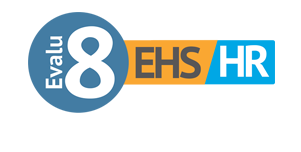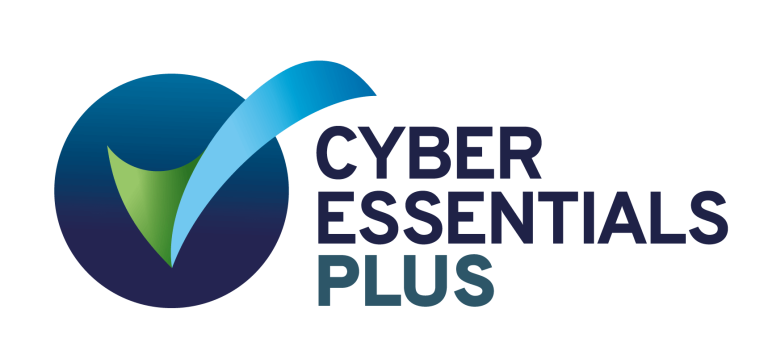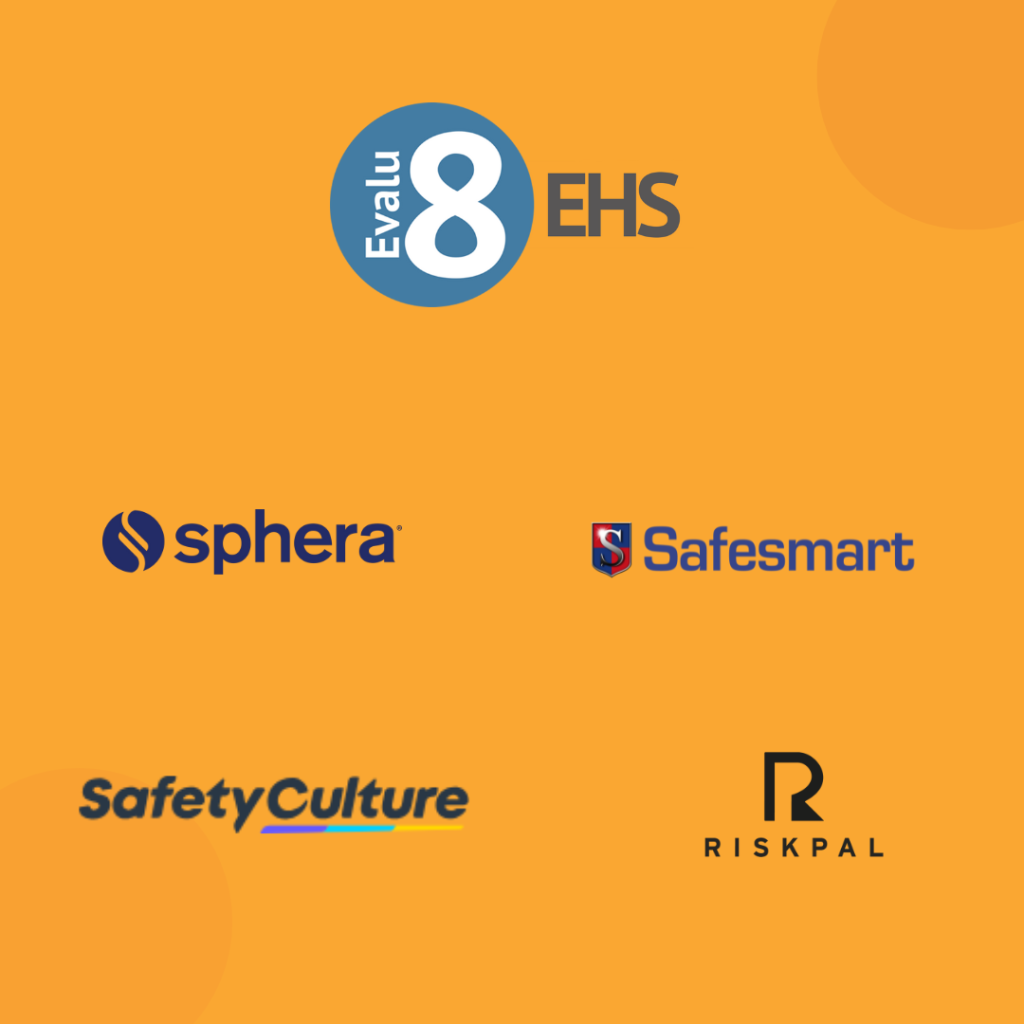
Choosing the right EHS software is vital for UK waste management and recycling businesses looking to stay compliant, manage risk, and streamline safety workflows. With evolving HSE regulations, COSHH requirements, and ISO standards, an effective system can prevent incidents, reduce downtime, and ensure worker safety.
But with so many options on the market, which software is the best match for your waste or recycling operation?
In this guide, we compare the top 5 EHS software solutions for UK waste management and recycling companies in 2025. We’ll evaluate their core and advanced features, compliance capabilities, pricing approaches, and suitability for sites handling refuse, sorting, hazardous waste, and WEEE.
Helpful summary
Overview: This article, brought to you by Evalu-8 EHS, offers a thorough comparison of five leading EHS software platforms for UK waste and recycling operations in 2025. We explore each solution’s core features, advanced tools, pricing models, and any functionality gaps, focusing on practical needs for waste facilities.
Why trust us: At Evalu-8 EHS, we specialise in modular, user-friendly safety software designed for UK industries with high-risk environments. Our insights come from public information, customer feedback, and hands-on testing of each platform. We understand challenges such as RAMS, COSHH, incident logging, and asset inspections and much more in waste management.
Why it matters: Waste facilities regularly handle unknown and hazardous materials everything from decomposing waste to lithium batteries. The right EHS software ensures site-specific RAMS, COSHH assessments for cleaning chemicals and waste oils, live incident reporting, and real-time audit tracking. This drives safer operations and demonstrates due diligence to regulators and insurers.
Action points: Use this guide to compare which EHS system aligns with your operation’s size, budget, and complexity. Whether you need robust COSHH tracking, mobile-first inspections, or detailed reporting on near-misses, this list will help you pick a solution that works as hard as your team does.
Evalu-8 EHS Best EHS Software for Waste Management and Recycling
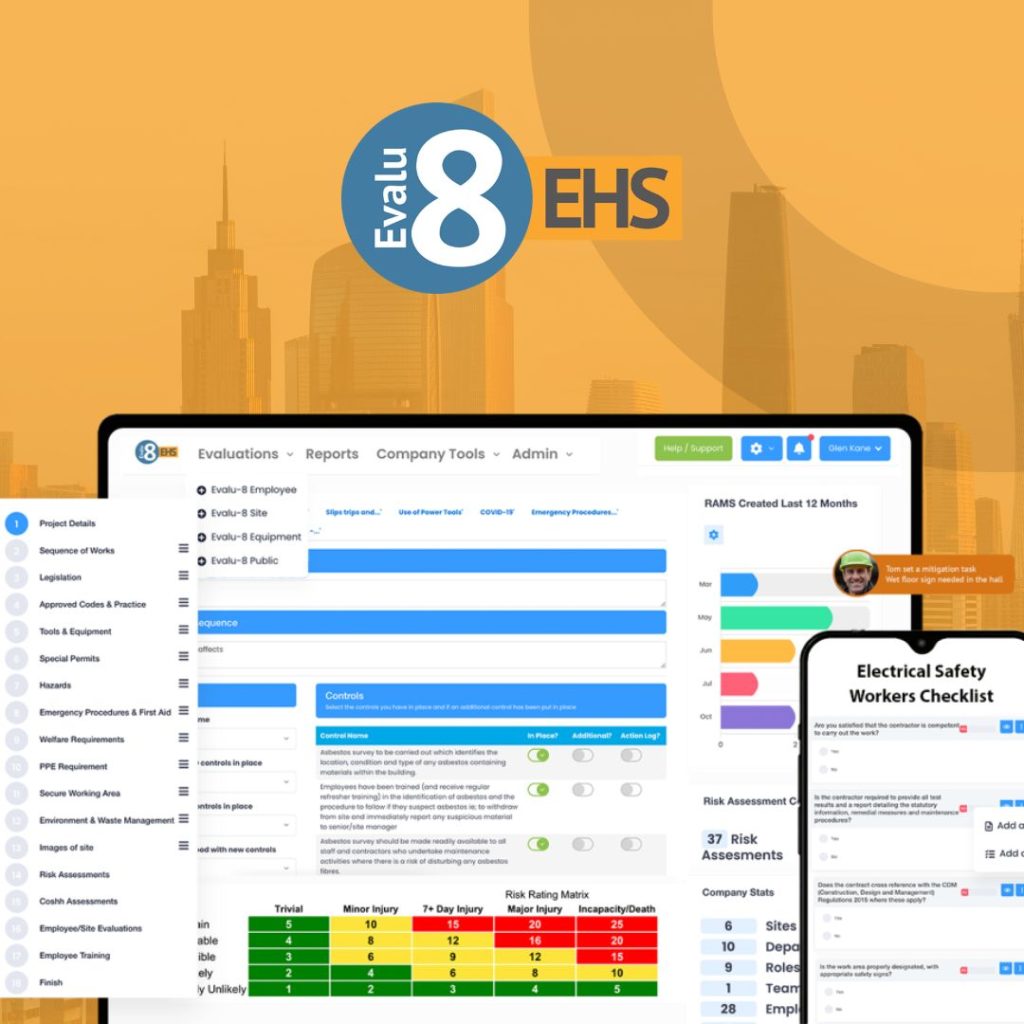
Why Evalu-8 EHS stands out
Evalu-8 EHS delivers a modular, all-in-one safety platform tailored to UK businesses, including waste and recycling sites. It excels at combining RAMS, COSHH, incident reporting, asset management, and mobile audits in one centralised system. Evalu-8’s simplicity and focused UK support make it highly suitable for refuse facilities, sorting lines, and hazardous waste sites. While it may lack a built-in eLearning library, its SCORM compatibility covers external training. Evalu-8 also stands out for affordability and ease of configuration across multiple locations.
Core Features
RAMS Builder: Create and assign site-specific RAMS for sorting lines, tipper vehicle operations, and sharps handling with digital sign-off.
COSHH Management: Log assessments for waste oils, disinfectants, and lithium battery hazards linked to mobile plant and cleaning workflows.
Incident Reporting: Log cuts, burns, plant entrapment, and air quality issues with photo uploads via desktop or mobile.
Asset & Equipment Management: Track baler inspections, vehicle maintenance, and dust suppression equipment with expiry alerts.
Audits & Inspections: Build PPE compliance and waste handling checklists, assign actions, capture evidence, and track completion.
Task Management: Automate overdue inspections, corrective action follow-ups, and escalate repeat incident zones.
Documents & E-sign: Store training logs, fire drill records, COSHH logs, and RAMS packs with digital signatures.
Mobile App: Workers can complete checks, sign COSHH, and report incidents in real time from any site.
Advanced features
Fatigue Risk Management: Manage weekend shifts and rotating patterns to identify fatigue hotspots among site crews.
Multi-Site Oversight: Group data by facility or sorting zone for easier audit and compliance tracking across a waste network.
Real-Time Dashboards: Customisable views show live near-miss trends, site hygiene scores, and compliance gaps.
Automation & Alerts: Schedule recurring inspections and receive automatic notifications for overdue tasks or expiring documents.
Document Control: Version control keeps policies, procedures, and COSHH documents updated and accessible.
Explore Evalu-8 EHS
Pricing
Evalu-8 EHS follows a modular, pay-as-you-grow model. Core platform access starts at £2.50 per user per month. Additional modules (e.g. RAMS, COSHH, audits) can be added as needed. Pricing scales based on number of user.
Pros & cons
Pros:
Affordable, modular pricing ideal for small to mid-sized waste sites
All-in-one platform covering RAMS, COSHH, incidents, and audits
Mobile app enables live reporting and evidence capture
Digital signatures for on-the-spot COSHH and RAMS sign-off
UK-based support with regular feature updates
Cons:
Advanced cross-site reporting requires setup assistance which is provided on set-up.
Some offline document access can be slow
Lacks environmental sensor integrations for gas/dust monitoring
SafetyCulture
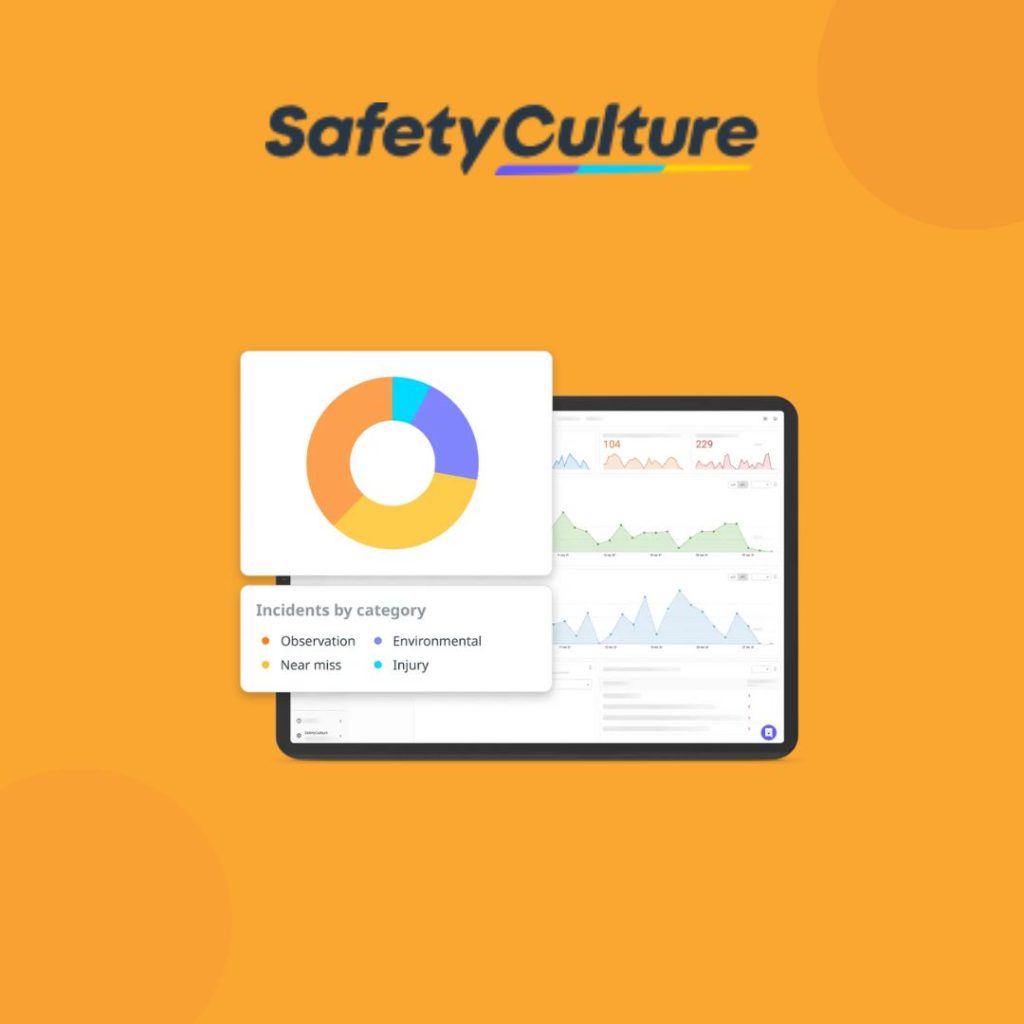
SafetyCulture shines at mobile-first audits and inspections. Its intuitive checklist builder suits waste sorting lines and tipper vehicle pre-starts. However, its COSHH and asset management are less tailored to hazardous waste specifics. For teams already using iAuditor, it’s a familiar interface but smaller sites may find the premium cost heavy once scaling beyond 10 users. While excellent for live inspection capture, incident follow-up and reporting at portfolio level require manual setup.
Core features
Inspections & Audits: Digitise site hygiene, PPE checks, and route inspections with customisable templates and live photo uploads.
Issue & Incident Reporting: Log hazards, near-misses, and air quality issues in the same workflow as audits.
Analytics & Reporting: Generate basic incident trend and audit outcome reports; export to CSV for further analysis.
Training Management: Track completion of online modules, though no dedicated waste-specific content.
Task Management: Create corrective actions from audit findings and assign to operators.
Advanced features
Asset Management: Track plant and equipment status, but rudimentary compared to specialised waste scheduling.
Integrations: Connect to other business systems (e.g. Microsoft Teams), though waste-specific integrations are limited.
Customisable Templates: Adapt templates for tipper checks, sort line audits, and COSHH reviews.
Constraints and functionality gaps
Limited COSHH Tools: No built-in hazardous waste COSHH library; requires manual creation of substance data.
Manual Portfolio Reporting: Consolidating incidents from multiple locations requires manual consolidation rather than an automated dashboard.
Offline Data Sync: Works offline, but syncing large image-heavy reports can take time in low-connectivity zones.
No Environmental Sensor Integration: Lacks direct gas or dust monitor data capture; everything must be entered manually.
Pricing
Free Plan: Up to 10 users, 5 active templates, 3 years of data storage limited for growing sites.
Premium: $24 per user per month (approx £19), unlimited templates and users, advanced analytics.
Enterprise: Custom pricing for large operations; contact SafetyCulture for a quote.
Pros & cons
Pros:
Extremely user-friendly mobile interface for audits and inspections
Quick setup with hundreds of template examples
Real-time photo and voice note capture during inspections
Integrates with standard business tools (e.g., Microsoft Teams)
Cons:
Expensive once scaling above 10 users
No waste-specific COSHH or hazard libraries
Manual consolidation of incidents across multiple sites
Limited environmental data integration
RiskPal
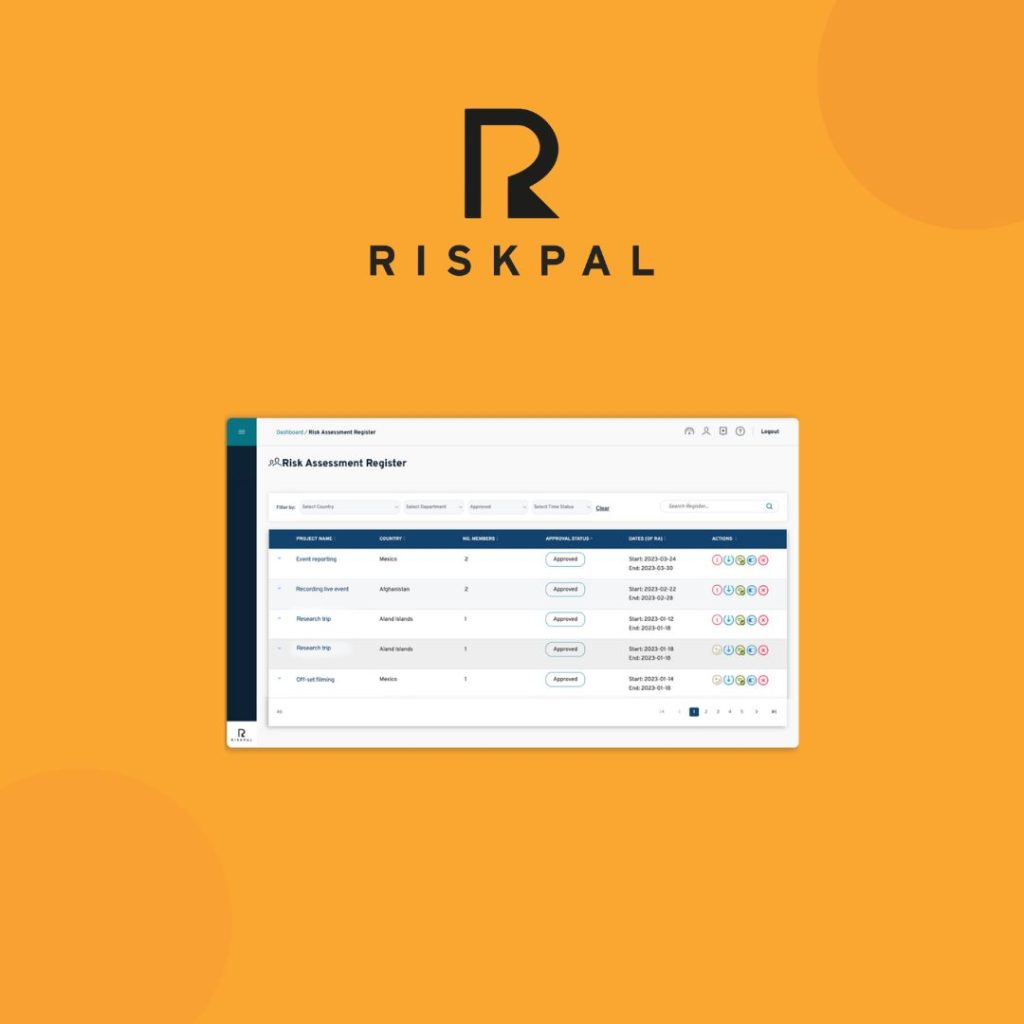
RiskPal focuses on risk assessments and COSHH for hazardous materials. It offers extensive libraries for chemicals often found in WEEE or battery-containing waste. However, its mobile inspection and incident modules are basic compared to full-featured platforms. For sites that prioritise robust COSHH management such as WEEE recycling or lithium battery disposal, RiskPal is a solid choice. But if you need live inspections or detailed asset tracking, you’ll find limitations.
Core features
Risk Assessment Builder: Create detailed assessments for mobile plant, fire risks, and asbestos contamination in waste streams.
COSHH Management: Pre-loaded chemical library for disinfectants, waste fluids, and lithium battery hazards; generates Safety Data Sheets.
Incident Reporting: Log accidents, exposures, and near misses—though lacking strong photo evidence or mobile offline support.
Audit Templates: Basic checklists for site hygiene and PPE compliance; no advanced scheduling or reminders.
Document Storage: Central repository for all risk assessments, COSHH files, and site procedures.
Advanced features
Automated Reviews: COSHH and risk assessments prompt automatic review reminders based on expiry dates.
Dynamic Libraries: Frequently updated chemical substances library, especially useful for evolving WEEE regulations.
Integration with MS Office: Export risk assessments to Word/PDF; integrate with SharePoint libraries.
Constraints and functionality gaps
Weak Mobile Functionality: No dedicated mobile app; relies on responsive browser, which can be cumbersome on site.
Limited Incident Workflow: Incident follow-up actions must be tracked manually or via external tools.
No Asset Management Module: Plant and equipment inspections must be tracked outside the platform.
Basic Audit Features: Lacks advanced scheduling, reminders, and version history for audit templates.
No Geolocation or Environmental Monitoring: Cannot auto-tag incident location or integrate sensor data for dust/gas levels.
Pricing
RiskPal uses tiered pricing based on number of users and modules.
Risk Only Plan: From £2 per user per month covers basic risk assessments and COSHH.
Pro Plan: From £5 per user per month adds incident reporting and document storage.
Enterprise: Custom quote for larger waste networks with dedicated support.
Pros & cons
Pros:
Strong COSHH library tailored to hazardous waste and WEEE
Automated review reminders for expiring assessments
Deep risk assessment templates for mobile plant and fire hazards
Easy export to Word/PDF and integration with SharePoint
Cons:
No dedicated mobile app site users rely on browser
Lacks asset management and advanced audit scheduling
Basic incident reporting without photo or offline support
No environmental sensor or geolocation integration
Sphera
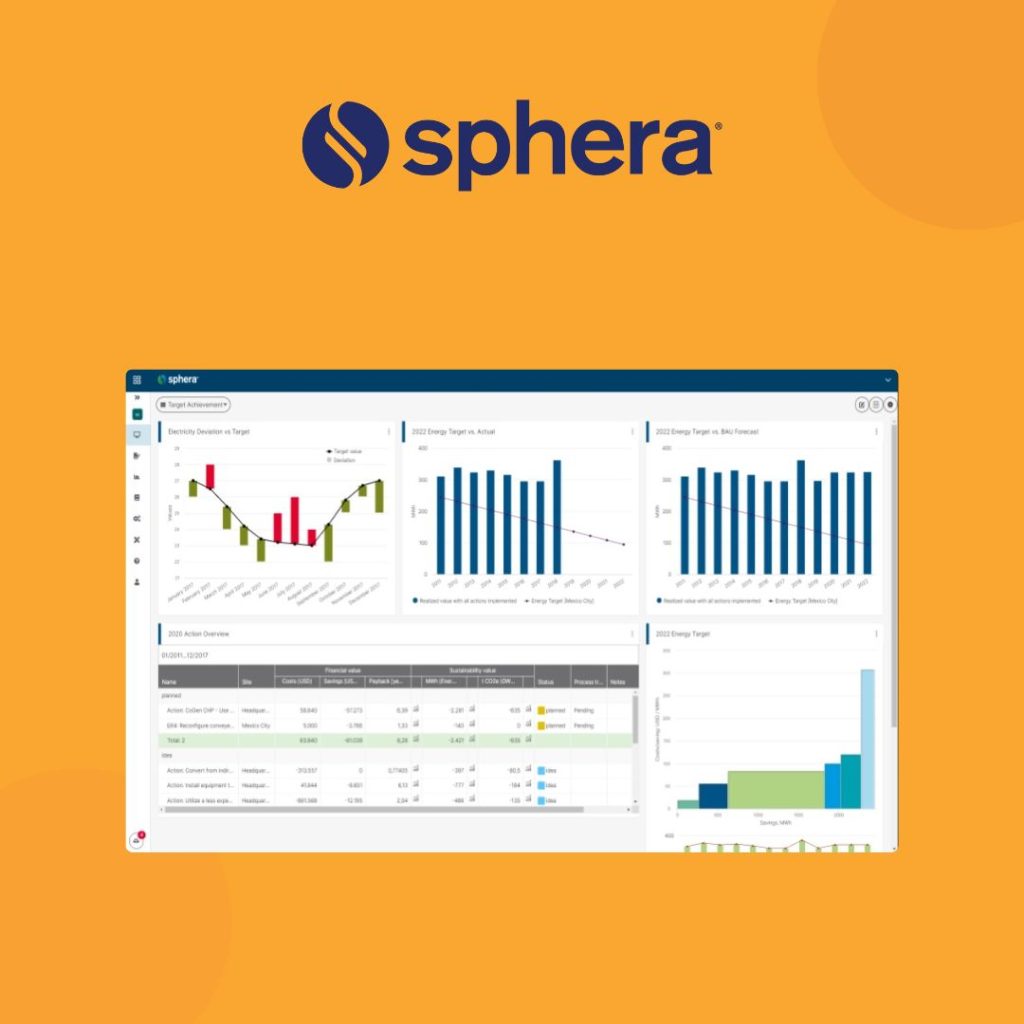
SpheraCloud offers a comprehensive EHS&S suite, covering incident reporting, risk, COSHH, environmental accounting, and sustainability. For large waste management firms or hauliers, its depth in regulatory tracking and ESG reporting is unmatched. However, Sphera’s complexity and lack of a waste-specific focus can mean lengthy onboarding and higher costs. Small to mid-sized recycling sites may find the breadth of features more than they need and struggle with the learning curve.
Core features
Health & Safety Management: Centralised incident logging, near-miss analysis, and corrective action workflows.
COSHH & Chemical Management: Extensive chemical library for biohazardous waste, disinfectants, and battery fluids.
Environmental Accounting: Track emissions, waste volumes, and sustainability KPIs for ESG reporting.
Audit & Inspection: Build complex audit workflows, schedule multi-site inspections, and manage corrective actions.
Training Management: Track and record training compliance for staff and contractors across all sites.
Advanced features
ESG Reporting: Consolidate environmental metrics, compliance obligations, and waste diversion data into board-level dashboards.
Data Analytics: Real-time analytics on incident trends, risk hotspots, and near-miss frequency across multiple facilities.
Mobile Access: Mobile app supports offline incident logging and audit checks, though performance can lag on older devices.
Contractor Management: Track contractor safety records, certifications, and site inductions, especially for third-party hauliers.
Constraints and functionality gaps
High Complexity & Learning Curve: Configuration requires dedicated implementation support; small sites may struggle.
Expensive for Smaller Operators: Custom quotes often run into tens of thousands per year for full modules.
Waste-Specific Workflows Absent: No out-of-the-box templates for WEEE, tipper operations, or sharps handling; custom development needed.
Slow Mobile Performance: Offline audits can lag when syncing large data sets or many images.
Integration Overhead: While integrations exist, on-boarding new connectors (e.g. environmental sensors) requires technical resources.
Pricing
Sphera offers custom pricing based on modules, number of users, and implementation scope. Typical entry for mid-sized operators starts around £30,000 per year, including licences, support, and training.
Pros & cons
Pros:
Comprehensive EHS&S suite geared to large enterprises
Robust ESG and environmental accounting for full sustainability reporting
Deep analytics and real-time dashboards across multiple sites
Offline mobile app for audits and incident logging
Cons:
High total cost and lengthy implementation time
Steep learning curve for administrators and users
No waste-specific templates requires custom setup
Mobile performance can be slow in low-connectivity zones
SafeSmart
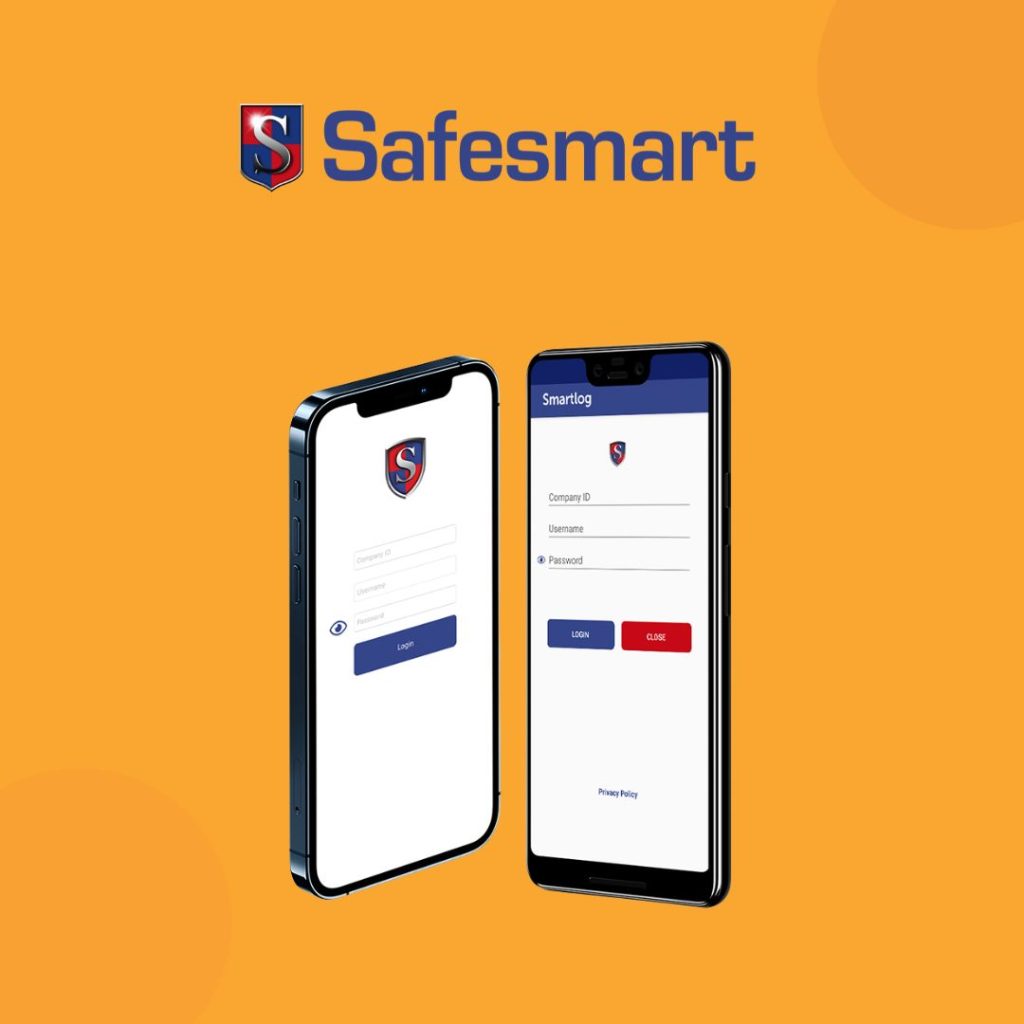
SafeSmart focuses on health surveillance, contractor compliance, and medical records areas often overlooked in EHS tools. For recycling sites dealing with dust exposure or sharps risk, its health monitoring and online medical questionnaires help identify occupational illnesses early. However, SafeSmart’s core strength is health data; its RAMS, COSHH, and incident modules are secondary. Organisations needing a primary EHS system with full audit and asset tracking should use SafeSmart in tandem with another platform.
Core features
Health Surveillance: Automated medical questionnaires for dust, noise, and chemical exposure common in waste recycling.
Contractor Gateway: Onboard subcontractors, verify qualifications, and track site-specific inductions.
Incident Reporting: Basic logging for injuries, near-misses, and occupational illnesses—no dedicated photo evidence.
Training & Competency: Manage mandatory medical checks and refresher questionnaires for all staff.
Document Storage: Centrally store medical records, training certificates, and contractor licenses.
Advanced features
Risk-Based Medical Alerts: Automated alerts when a worker’s health metrics exceed threshold (e.g. lung function for dust exposure).
Dashboard Insights: Visualise site-wide health trends hearing, respiratory, mental health—for early intervention.
Mobile Self-Checks: Workers can complete health questionnaires from any device before entering high-hazard zones.
Constraints and functionality gaps
Limited RAMS & COSHH: No robust RAMS builder; COSHH module is basic, requiring manual chemical entry.
No Asset Management: Does not track inspection schedules for balers, vehicles, or dust suppression equipment.
Basic Incident Workflow: Lacks detailed follow-up workflows; corrective actions must be managed offline.
No Environmental Monitoring: Cannot capture sensor data for gas or particulate levels; purely question-based health checks.
Subscription Structure: Charged per medical questionnaire and per contractor license can add up for large sites.
Pricing
SafeSmart uses a per-user, per-questionnaire pricing model starting at £3 per survey. Contractor portal licences begin at £50 per contractor per month. Larger organisations negotiate custom bundles.
Pros & cons
Pros:
Strong health surveillance tools for dust, noise, and chemical exposure
Automated alerts when health metrics exceed safe thresholds
Contractor management ensures all third-parties are verified before site access
Mobile health questionnaires improve compliance on weekend or remote shifts
Cons:
Weak RAMS, COSHH, and asset modules requires other tools for full EHS coverage
No photo-based incident or audit evidence functionality
Pricing can escalate quickly for large numbers of questionnaires or contractors
No integration with environmental sensors for real-time exposure data
Final Thoughts
Selecting the right EHS software for waste management and recycling in 2025 depends on your site size, risk profile, and budget. Evalu-8 EHS offers a modular, all-in-one solution ideal for small to mid-sized waste facilities requiring RAMS, COSHH, mobile audits, and asset management in one platform. SafetyCulture excels at mobile inspections but is comparatively pricey at scale. RiskPal provides deep COSHH and risk assessment libraries but lacks robust mobile incident workflows. Sphera caters to large enterprise needs with advanced ESG and analytics, though onboarding is complex. SafeSmart shines for health surveillance and contractor compliance but requires a companion platform for full EHS coverage. RAMs App is perfect for rapid RAMS and method statement generation but lacks broader EHS features.
Understanding each solution’s strengths and gaps will help you choose a system that supports safer, more compliant, and more efficient waste operations across your sites.
FAQs
Look for tools that support site-specific risk assessments and method statements (RAMS), COSHH for hazardous materials, live incident reporting with photo evidence, asset and equipment inspection scheduling, and mobile access for field teams.
Yes. Waste facilities often operate in remote or low-connectivity areas. A mobile-friendly solution ideally with offline capabilities ensures staff can complete audits, incident logs, and COSHH sign-offs on the spot, without waiting to return to the office.
Waste sites handle unique chemicals such as disinfectants, diesel, waste oils, and lithium battery fluids. COSHH modules should include a library of these substances, automated review reminders, and tie directly into cleaning and plant-operation tasks so that controls and safety data are always up to date.
Most organisations see a return on investment within 6–12 months through reduced incident rates, faster audit turnaround, improved compliance, and decreased paperwork. Improved real-time reporting of near-misses, automated task reminders, and live data dashboards further accelerate cost savings and safety performance.
